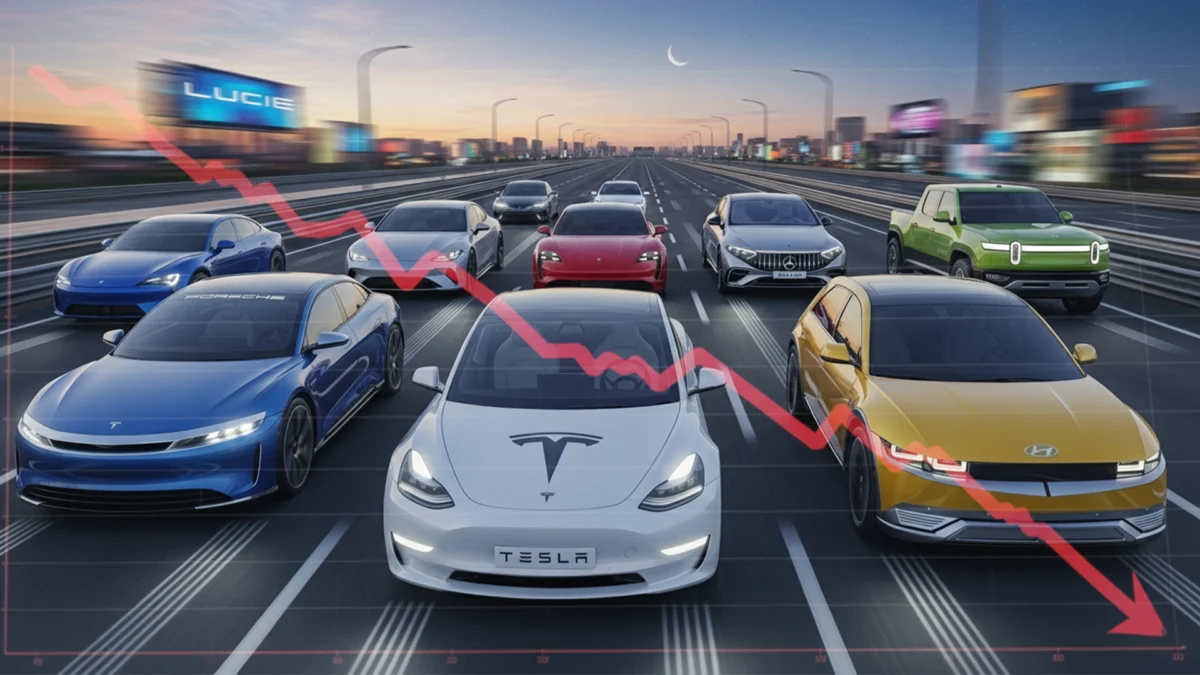Tesla’s U.S. Market Share Falls to Eight-Year Low Amid Rising EV Competition
The decline is attributed to intensified competition, with established automakers such as Hyundai, Honda, Kia, and Toyota offering significant incentives to boost their EV sales.
Tesla’s market dominance in the U.S. electric vehicle (EV) sector is showing signs of erosion, as buyers increasingly turn to rival automakers offering more attractive EV options. According to data from research firm Cox Automotive, shared exclusively with Reuters, Tesla’s U.S. market share dropped to 38% in August 2025 — its lowest in nearly eight years and the first time it has fallen below the 40% mark since October 2017, when the company was ramping up production of its Model 3.
The decline is attributed to intensified competition, with established automakers such as Hyundai, Honda, Kia, and Toyota offering significant incentives to boost their EV sales. Many of these manufacturers reported a surge in demand, with monthly sales increases ranging from 60% to 120%, helping them expand their market share at a time when Tesla’s growth has stalled. The broader EV market grew by 14% in August, while Tesla’s growth rate slowed to just 3.1%, Reuters reported.
Tesla’s struggles come at a time when it is attempting to pivot its focus toward developing robotaxis and humanoid robots, delaying plans for more affordable EV models. The company’s last new vehicle launch, the Cybertruck in 2023, has failed to replicate the success of earlier models like the Model 3 and Model Y. Efforts to refresh the Model Y have not significantly improved sales, and Tesla appears headed toward a second consecutive year of declining deliveries.
The company’s reliance on price cuts and incentives to stimulate demand is also affecting its profit margins, raising concerns among investors. For years, Tesla’s ability to command premium prices had allowed it to maintain profitability, but the current market environment is forcing the company to choose between sustaining profits or boosting sales through higher incentives that erode its margins.
Adding to Tesla’s challenges are concerns over CEO Elon Musk’s political affiliations and activities. Musk’s involvement in efforts to reshape the U.S. government under President Donald Trump, followed by his departure from the administration and strained relations with the Republican leader, has reportedly impacted public perception of the brand.
Despite Tesla’s weakened market position, overall EV sales in the U.S. remain buoyed by the looming expiration of the $7,500 federal tax credit at the end of September. Many automakers, including Tesla, have rolled out aggressive deals to attract buyers in the lead-up to the cutoff. In July, sales of new EVs jumped by more than 24% month-over-month to over 128,000 units, with Tesla’s sales increasing by 7% to just over 53,800 units, according to the data shared with Reuters.
The shifting dynamics in the EV market underscore the growing pressure on Tesla as competitors leverage incentives and newer models to challenge its long-standing supremacy. Analysts expect this trend to continue through September, after which a decline in federal support may further reshape the competitive landscape. Tesla’s future trajectory may depend on how effectively it balances its ambitions in robotics and AI with the core demands of its automotive business in an increasingly crowded market.
